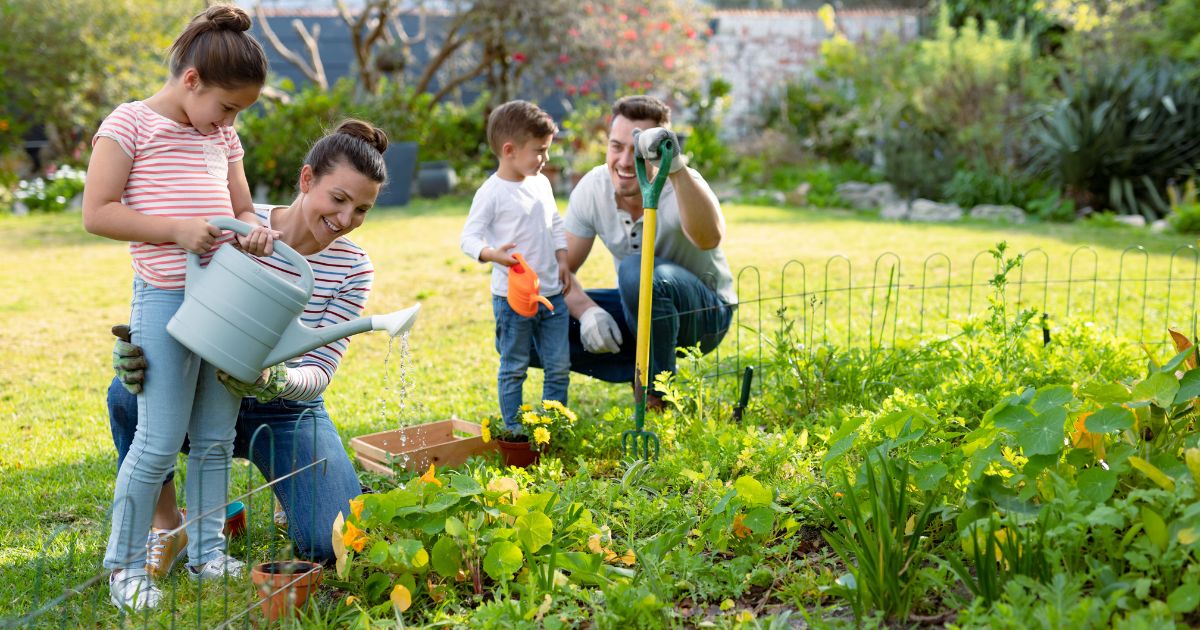Your Ultimate Spring Gardening To-Do List
WHAT YOU'LL LEARN
Spring garden prep basics
What and when to plant
Easy lawn and pest care tips
WHAT YOU'LL LEARN
Spring garden prep basics
What and when to plant
Easy lawn and pest care tips

Let’s not beat around the bush – after the long winter months, your garden needs a wake-up call.
Just like a bear goes into hibernation, your garden primarily uses the snowy season to rest and recoup before springtime rolls around. And now, with perennial plants and other vegetation waking up from their slumber, it’s time to throw on your gloves, grab your rake and wheelbarrow, and use our tips to get your garden looking fresh as a daisy.
Whether you're a seasoned green thumb or just getting your hands dirty, these spring gardening tips will have your lawn, flowerbeds, and vegetables growing strong all season long.
Clear the Clutter: Make Your Flowerbeds
One of the first items on your list should be cleaning and clearing out last winter’s dead leaves and mulch before you tend to your current garden or plant your annual flowers and vegetables.
While the debris did serve a purpose last season in protecting your plants from harsh weather, keeping up with your garden’s hygiene will help prevent pest or disease outbreaks from forming in your flowerbeds.
Pile all the organic waste you find into a composter to turn it into a nutrient-rich fertilizer. Composting is a great eco-friendly gardening practice!
Refresh with Mulch
Adding a fresh layer of mulch around your flowerbeds will help your soil retain moisture and keep weeds from sprouting. Plus, giving your garden a fresh coat of mulchy paint won’t hurt your home’s curb appeal either.
Spread fresh mulch evenly with a rake or your glove-protected hands but don’t layer it on too thickly or close to the perennials that you want to keep. A level mulch can help your plants stay in place when April’s showers turn into heavy rains and wind gusts.
Prune Shrubs and Trees
If you didn’t prune your shrubs and trees in the fall or winter, now is the perfect time for a trim. Get rid of last season's overgrown and unattractive branches or blooms to prepare your plants for a new spring blossom.
Generally, flowering shrubs that bloom on new wood need to be trimmed in the spring – including butterfly bushes, potentilla, and rose bushes. However, early flowering shrubs and those that blossom on old wood – like azaleas, lilac, or forsythia – don't need pruning. Doing so will risk cutting off this year’s flower buds.
Pro tip: Clean your pruning shears before and after use to prevent the spread of plant disease.
Let Your Green Thumb Fly
In early spring, vegetables like potatoes, peas, and artichokes benefit from the cool climate and soil. And they’ll likely be ready to harvest by the summertime.
Plant your new perennials halfway into spring since they require some time to settle in and grow their roots before temperatures climb. As for new trees and shrubs, you can plant them as soon as the ground thaws.
Try this: Keep a planting calendar to track what you’ve planted and when each crop will be ready to harvest.
Keep Pesky Pests Under Control
Don’t stop to smell the roses yet! Keep pesky critters out of your garden with a natural or synthetic pest treatment. As temperatures start to rise, so do the hungry insects.
Keep children and pets away while you spray any repellent and remember to wash your hands afterward.
Bleach-free castile soap mixed with distilled water and vegetable oil combine to make an excellent homemade insecticide.
Give Your Lawn Some Love
A fresh green lawn can make your whole yard feel brand new. Early spring is a great time to aerate your soil, fill in any bald patches with grass seed, and apply a slow-release fertilizer.
Water your lawn in the morning to avoid evaporation and give your grass a better chance to soak up all the nutrients.
Test Your Soil
Healthy soil is the foundation of a thriving garden. Before planting anything new, pick up a soil test kit at your local garden center or extension office. Testing for pH levels and nutrients will help you decide if your soil needs any amendments (like lime or compost) to support plant growth.
Balanced soil = happy plants.
Clean Your Gardening Tools
And before you dig into another season, make sure your tools are up for the job. Clean off any rust, sharpen blades, and replace any broken gear. Trust us—your hands (and your plants) will thank you.
Storing tools in a dry, sheltered spot can help keep them in good shape for years to come.
Bonus Tips for Organic, Sustainable Gardening
Want to go greener this season? Try composting kitchen scraps, planting native species that require less water, and using rain barrels to naturally hydrate your garden.
You can also attract pollinators like bees and butterflies by planting nectar-rich flowers such as coneflowers, bee balm, and lavender.
Spring Into Summer Gardening
With your spring garden running in tip-top shape, it’s time to look ahead to the summer. By June or July, it’ll finally be time to start picking out your summer annuals and warm-season vegetables.
Introduce petunias, zinnias, and tomatoes to your garden to take advantage of the new season’s climate. But how you arrange your garden and choose the plants you want to grow is ultimately up to you. It’s one of the many advantages of being a homeowner!
And if you’re dreaming of more backyard space or a garden to call your own, maybe it’s time to consider a move. After all, new roots aren’t just for your plants.